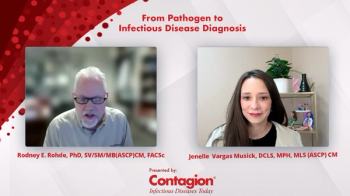
UNAIDS' Global Progress Report Shows Mixed Results in Achieving HIV Targets
Global HIV/AIDS data from 2018 reveals that some countries are making tremendous strides towards the 2020 targets, while others are still seeing a rise in new HIV cases and AIDS-related deaths.
A recent
Globally, there were approximately 1.7 million new cases of HIV in 2018, representing a 16% decline since 2010, which the report indicates was driven mostly by steady progress across most of eastern and southern Africa. The report acknowledges the progress made in countries such as South Africa, where new HIV infections were reduced by more than 40% and AIDS-related deaths by around 40% since 2010.
According to the report, areas and regions of concern, or places where there have been increases in HIV infections include eastern Europe and central Asia (29%), the Middle East and North Africa (10%), and Latin America (7%).
The report indicates that key populations and sexual partners now account for more than half of the new HIV infections globally (54%). In 2018, these “key populations”—which include men who have sex with men, people who inject drugs, transgender individuals, sex workers, and prisoners—accounted for approximately 95% of new HIV cases in eastern Europe, central Asia, the Middle East, and North Africa.
However, UNAIDS found that less than 50% of individuals in key populations were reached with “combination HIV prevention services in more than half of the countries that reported,” which represents the stigma and marginalization that still exists.
The report notes that progress is continuing towards the
Although progress overall looks strong, the situation does vary by country and region. The report highlights that in eastern Europe and central Asia, 72% of PLWH knew their HIV status in 2018, but just 53% who knew their status had access to treatment.
The press release also reveals overall progress in the reduction of AIDS-related deaths, new HIV infections among children, and new infections among young women (15 to 24 years), but more progress is needed to reach intended targets.
Overall AIDS-related deaths have declined by 33% since 2010 but have risen by 5% in eastern Europe and central Asia, and 9% in the Middle East and North Africa.
Around 82% of pregnant women living with HIV now have access to antiretroviral medicines, which represents an increase of more than 90% since 2010. Use of HIV treatment has resulted in a 41% reduction in new HIV infections among children since 2010, yet there were approximately 160,000 new HIV infections in children in 2018, which falls short of the target of reducing incidence to fewer than 40,000 in the same year.
Additionally, the global rate of new HIV infections among young women declined by 25% between 2010 and 2018, but large disparities still exist, as this population of women are 60% more likely to become infected with HIV than young men of the same age.
The report also encourages more widespread implementation and use of pre-exposure prophylaxis and harm reduction programs for people who inject drugs to promote HIV prevention and limit transmission.
“There is an urgency to tackle the underlying structural drivers of inequalities and barriers to HIV prevention and treatment, especially with regard to harmful social norms and laws, stigma and discrimination and gender-based violence,” the authors of the report wrote.
In addition to addressing disparities in the current status of the HIV epidemic as compared with the 2020 90-90-90 targets, the report also addresses gaps in funding. The authors report that, for the first time, the global resources available for the AIDS response has declined by nearly $1 billion.
In 2018, $19 billion was available for the AIDS response, which is $7.2 billion short of the estimated $26.2 billion needed by 2020. As funds for the response decline, the gap between resource needs and resource availability only widens.
“Adequate investments must be made in building the capacity of civil society organizations to deliver non-discriminatory, human rights-based, people centered HIV prevention, and treatment services in the communities most affected by HIV,” the authors conclude.
Newsletter
Stay ahead of emerging infectious disease threats with expert insights and breaking research. Subscribe now to get updates delivered straight to your inbox.






















































































































































































































































































































